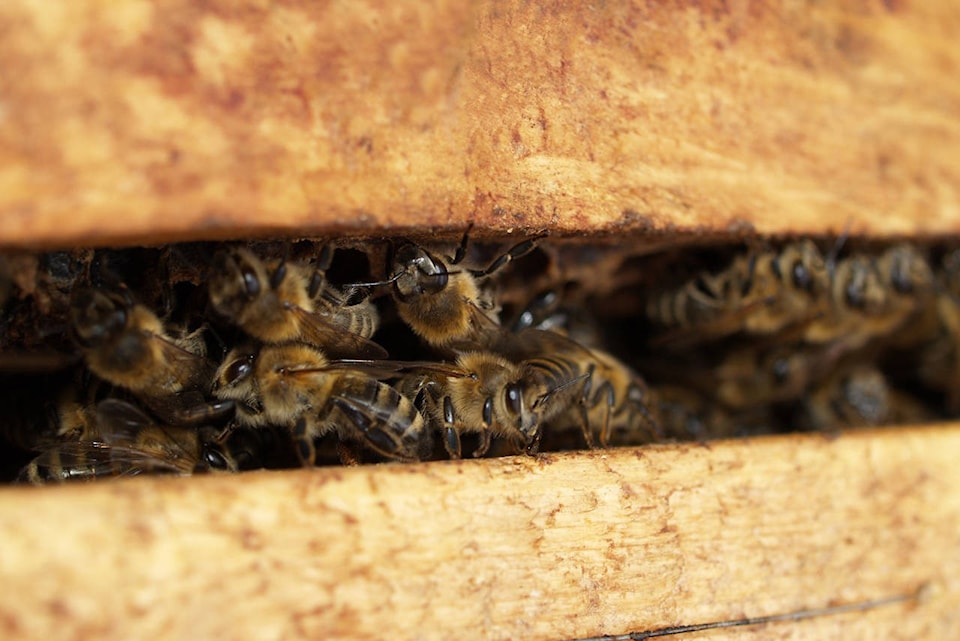Rachel Halliwell
Special to Black Press
In the last article, we spoke about winter ‘dead outs’ – the honeybee colonies that unfortunately did not make it through the winter and why it is important to identify the reasons your colony did not survive.
For those beekeepers who happily saw bees flying in and out of their hive entrance on our first sunny day of spring, you are faced with a new question: what is my next step?
As our weather becomes consistently warm, now is the time to do a thorough inspection- examining what you see when you enter your hive. Your first few spring inspections should be an observational checklist answering the question: is your hive on the right track?
When you open the hive for the first time, you should be able to notice the demeanor of the worker bees. Do they seem calm? This can be your first indicator that your overwintered colony has a queen, or what beekeepers often refer to as queen-right. As you inspect the frames of your colony, what do you see? Spotting the queen is quite exciting, but not always necessary. Yes, you want to make sure that your colony has a queen, although she is quick and doesn’t like to be exposed to light for too long, so she is not always easy to spot. Finding eggs is the next best indicator that your queen is running around somewhere in the colony. At this point in the season, your colony should be making new spring bees to take over the duties of the tired winter honeybees that have lived a long, long winter’s life. You should be on the verge of a population growth. That means you are seeing eggs, larva and hopefully capped brood.
As you inspect your overwintered colony, take note of their food stores. Do you think they are bringing in enough pollen and nectar to support the growing colony or is supplement food going to be helpful to get them through the first stretch of spring? These inspections are important in order to help support your colony and problem solve any hive issues early. As your colony continues to grow, you may consider splitting the hive- making two colonies from the one overwintered colony, but we will go over this next article!
In the meantime, happy beekeeping & feel free to contact info@homegrownbee.ca with any honeybee questions or concerns!
Rachel Halliwell is a Bee Master Certified beekeeper in the Comox Valley. Her website is www.homegrownbee.ca
